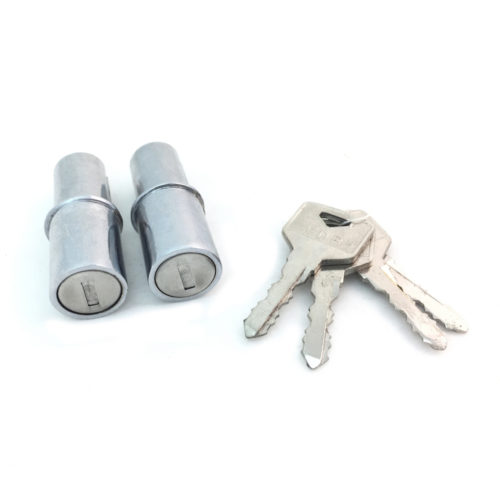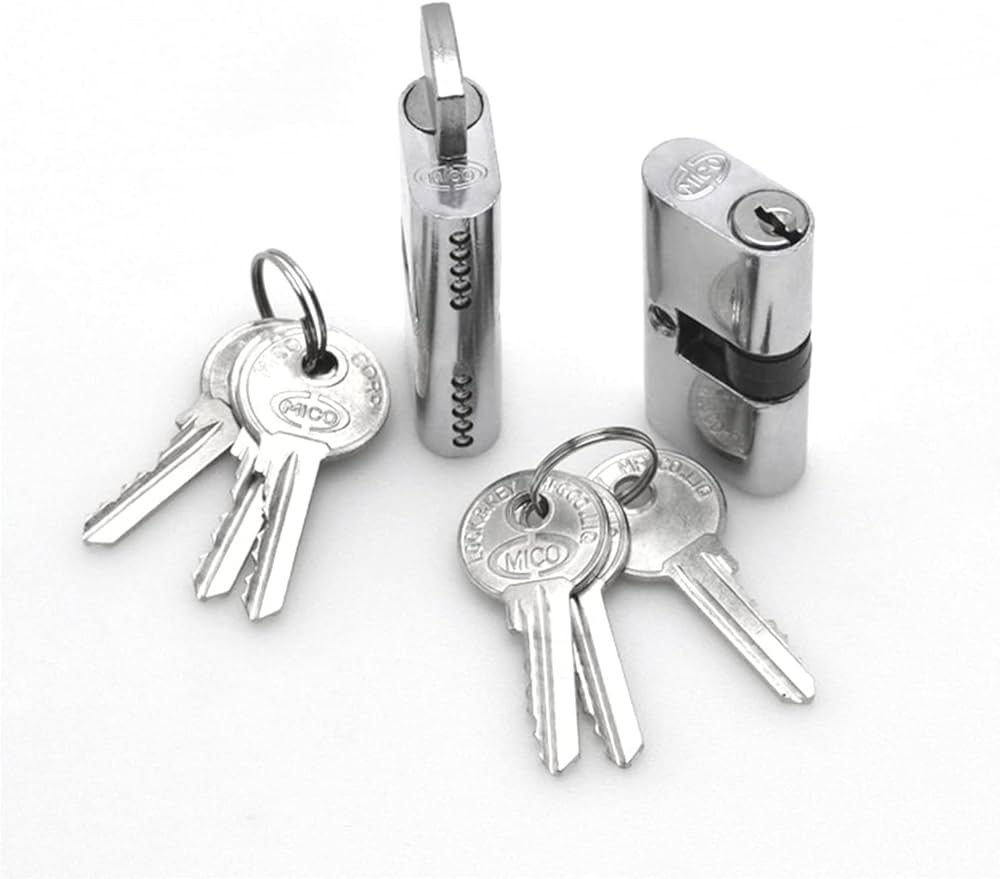If you find yourself locked out and need to remove a commercial door lock cylinder without a key, don’t worry; we’ve got you covered! In this guide, we’ll walk you through the simple steps to tackle this task with ease. You’ll need just a few basic tools and a bit of patience. By following our clear instructions, you’ll gain the knowledge and confidence to handle this situation like a pro. Whether it’s for maintenance, security upgrades, or simply a lost key, you’ll soon be able to remove the lock cylinder and regain access to your space. Let’s get started!

Considerations For Commercial Door Lock cylinder without a key for Replacement
We’ll walk you through the main points to consider when tackling this challenge. Let’s see that.
Assess the Situation
Start by closely examining the current state of your door lock. Is it jammed, damaged, or just showing signs of wear and tear? Understanding the condition will help you determine if a replacement is truly necessary or if a repair might suffice.
Gather Essential Tools
Before you begin the replacement process, ensure you have all the necessary tools on hand. These tools typically include a screwdriver, pliers, and the new lock cylinder itself. Having everything ready beforehand will save you the hassle of searching for tools mid-way through the project.
Measure the Cylinder
Accurate measurements are crucial when replacing a lock cylinder. Use a measuring tape to determine the length of the existing cylinder. This measurement will serve as a reference point when selecting a replacement, ensuring it fits perfectly.
Choose the Right Type
Commercial door lock cylinders come in various types, each designed for specific door lock configurations. Common types include mortise, rim, and euro profiles. Ensure you choose the type that matches your door’s existing lock style. This ensures compatibility and a snug fit.
Security Level
Determine the level of security you need. Lock cylinders vary in terms of security features and resistance to tampering. Higher security models often include features like anti-pick pins and hardened shells. Consider your security requirements and budget to make an informed choice.
Brand Compatibility
Some locks are specific to particular brands. Check the existing lock to see if it’s associated with a specific brand. If so, it’s advisable to replace it with a cylinder from the same brand to minimize compatibility issues.
Keying Options
Decide whether you want a replacement cylinder that can be keyed alike or keyed differently. Keyed alike means it can be operated with the same key as your other locks, while keyed differently means it comes with a unique set of keys. The choice depends on your preference for convenience and security.
Rekeying Services
If you want to maintain the same set of keys for multiple locks, consider rekeying services. Many locksmiths offer this service, allowing you to reconfigure a new lock cylinder to match your existing keys.
Ease of Installation
Opt for a lock cylinder that’s easy to install, especially if you’re a DIY enthusiast. Look for models that come with clear installation instructions. However, if you’re unsure about the installation process, it’s advisable to seek professional help to avoid mistakes that could compromise security.
Budget-Friendly Options
Lock cylinders come in a range of price points. If you have budget constraints, explore cost-effective options that still provide adequate security. Research different brands and models to find the best balance between affordability and quality.
Material and Durability
Consider the material of the lock cylinder. The toughness and corrosion resistance of brass and stainless steel make them appealing materials. The material affects the cylinder’s longevity and resistance to environmental factors.
Warranty
Look for lock cylinders that come with warranties. A warranty ensures you’re protected in case of any manufacturing defects or issues that may arise after installation. It provides peace of mind and potentially saves you money on future replacements or repairs.
Keyless Entry
If you’re interested in modernizing your security, consider a keyless entry option. Many lock cylinders now offer keyless access methods, such as keypad or electronic smart locks. These can enhance convenience and security.
Emergency Access
Plan for emergency access. Keep spare keys in a secure location or consider installing a hidden lockbox nearby. This ensures you have a backup plan in case you ever find yourself locked out.
Test the Replacement
After installing the new lock cylinder, test it thoroughly to ensure it functions as intended. Insert the keys, turn them, and check that the door locks and unlocks smoothly. Testing ensures that your security is not compromised.
Secure Old Cylinder
Dispose of the old cylinder securely. Do not leave it lying around where it could be discovered and potentially used for unauthorized access. Properly dispose of or recycle the old cylinder to maintain security.
Consider Professional Help
If you encounter any difficulties or uncertainties during the replacement process, do not hesitate to seek professional assistance. Locksmiths have the expertise to handle complex installations and can ensure the new lock cylinder functions correctly and securely.

How to remove commercial door lock cylinder without key
Let’s delve into more detailed steps for removing a commercial door lock cylinder without a key in a friendly and helpful manner:
Assess the Situation: Start by closely examining your commercial door lock. Look for any visible screws, pins, or clips on the faceplate or around the cylinder. These are potential entry points to remove the cylinder.
Gather Your Tools: The toughness and corrosion resistance of brass and stainless steel makes them appealing materials. You’ll need a screwdriver, pliers, and a paperclip or a small piece of wire.
Remove the Faceplate: Once you’ve identified and located the screws holding the faceplate in place, use your screwdriver to carefully remove them. The faceplate covers the inner workings of the lock.
Locate the Retaining Screw: After removing the faceplate, you should see the inner components of the lock. Inside, there’s a small retaining screw holding the cylinder in place. Use your screwdriver to remove this screw.
Eztract the Cylinder: With the retaining screw removed, you can now attempt to extract the cylinder. To do this, use your pliers to grip the cylinder firmly. Gently wiggle and pull it outward. It might take a bit of effort, so be patient.
Paperclip or Wire Method: If the retaining screw isn’t visible or accessible, you can still remove the cylinder using a paperclip or a small piece of wire.
Straighten the Clip or Wire: Take your paperclip or wire and straighten it out to create a long, thin piece that can reach the cylinder’s release mechanism.
Insert the Clip or Wire: Locate a small hole on the faceplate, typically just below the cylinder. Insert your straightened paperclip or wire into this hole as far as it can go.
Feel for Resistance: As you insert the paperclip or wire, you may encounter resistance. This is a good sign, as it means you’re engaging with the release mechanism inside the lock.
Turn and Pull: While keeping the paperclip or wire inserted, turn it gently in the direction you’d normally turn a key to unlock the door. At the same time, pull the cylinder outward. This should release the cylinder from the lock.
Remove the Cylinder: With the release mechanism engaged, continue pulling gently on the cylinder until it slides out of the door. It should come out smoothly at this point.
Dispose or Replace: Depending on your situation, you may either be replacing the cylinder or simply removing it for another reason. If you’re replacing it, follow these steps in reverse to install the new one. If not, dispose of the old cylinder securely.
Test the Door: Before you wrap up the process, it’s essential to test the door to ensure it locks and unlocks properly with the cylinder removed. This ensures that you haven’t accidentally damaged any other components of the lock.
Secure the Faceplate: Once everything checks out, reattach the faceplate to the door and secure it with the screws you removed earlier. Make sure the faceplate is snugly in place.
Consider Professional Help: If you find the process too challenging or if you’re concerned about damaging the lock or door, don’t hesitate to call a professional locksmith. They have the expertise to handle this task with precision and care.
Prevention for the Future: To prevent future lockouts, consider creating spare keys or installing a keyless entry system. This proactive approach can help you avoid this situation in the future.
Stay Calm: Throughout the process, remember to stay calm and patient. Removing a lock cylinder without a key may require some effort, but with the right tools and approach, you can accomplish it.
